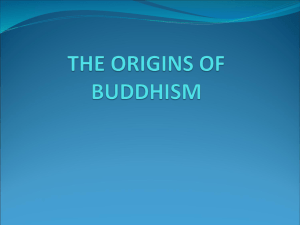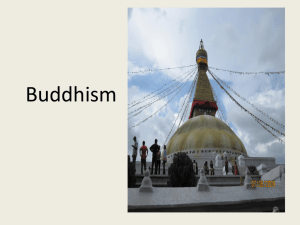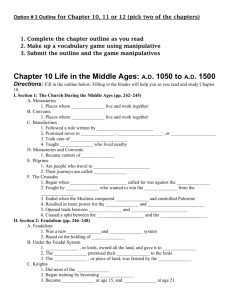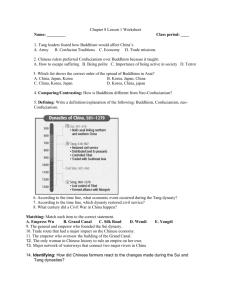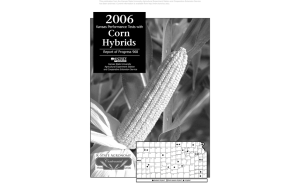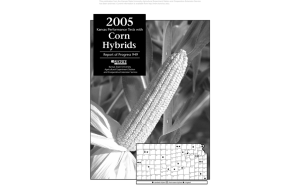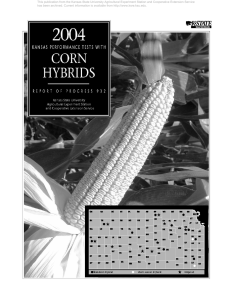Ch. 9: The Expansion of Trade & Religion in South and Southeast
advertisement
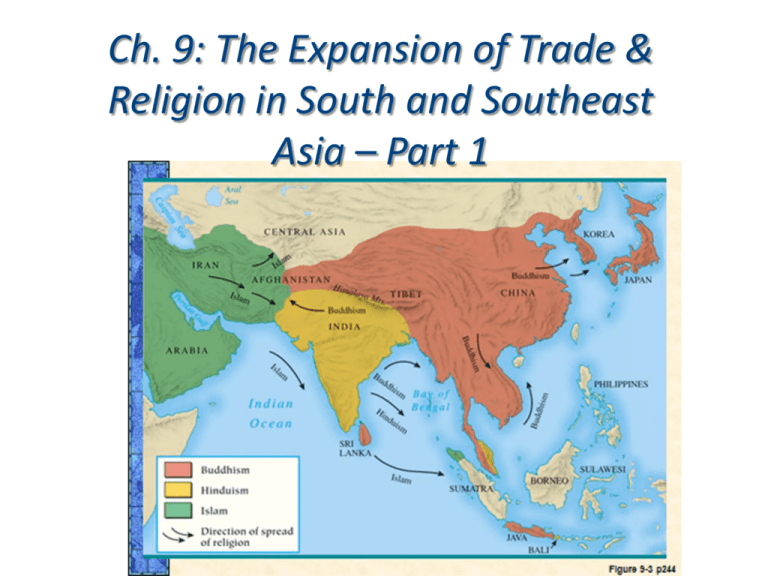
Ch. 9: The Expansion of Trade & Religion in South and Southeast Asia – Part 1 Questions • What was the silk road? • How and why did Buddhism spread through South East Asia? • How and why did Buddhism Transform ? • Why did Buddhism decline in India? • When did the Indians become Hindu? • What led to the growth of Islam in India? Identifications • • • • • • • Kanishka Spread of Buddhism Gupta Dynasty Theravada Mahayana Hinduism Puja • • • • • Sikhism Bodhisattvas Rajputs Saladin Crusades Kushan Kingdom (Afghanistan) 150 BCE - 320 CE Center of Trade Intermediary between Rome-China Trade Silk Road Figure 9-1 p241 How did Buddhism Spread? • Kushan Monarch, Kanishka, 2nd C C.E. – Merchants & Missionaries – Bamiyan • Gupta Dynasty Bamiyan (modern Day Kabul, Afghanistan p240 p252 Gupta Dynasty, 320 CE Raja Chandragupta Capital: Pataliputra Figure 9-2 p243 “Golden Age” or Classical Period • Raja Samudragupta • Trade regulated by government • Private sector of Jati Guilds • Barter & Money System Figure 9-3 p244 Changes of Buddhism Pre-Gupta • Nirvana – abstract concept • Siddhartha – Sage • Classes are equal Gupta • Nirvana – vision of heavenly salvation • Siddhartha – divinity • Closer to Nirvana than others – reinforced class difference How did Buddhism Transform? Theravada Mahayana “Teachings of the Elders Greater Vehicle” • a way of life Salvationist Creed • Strict adherence to personal behavior Nirvana - devotion • Bodhisattva Bodhisattva for All Siddhartha Only Why did Buddhism Decline? • • • • Denial of a soul – counter to traditional beliefs Rejection of class divisions Emphasized individual path Development of Hinduism – Initially an elitist tradition of the Brahmin class – Transformed to appeal to the masses When did Indians become Hindu? • Muslim Rule 1st Millennium CE • British Colonial Rule • Puja – Populist tradition focused on personal worship and achievement of individual goals – Influence of egalitarian nature of Buddhism – Brahmanism transformed into a religion of the majority p243 Mamallapuram Shore Temple Revival of Hindu Faith 8 C CE p246 p246 Dancing Shiva • 12 CE • Kingdom of Chola • Lost Wax Technique p257 Arrival of Islam Figure 9-4 p248 Kutub Minar,1192, Mosque over a Hindu Temple, Delhi p249 The Delhi Sultanate • 1192 – Muslim rule at Delhi • 997 Mahmud expanded Kingdom • 1200 – All of Northern India • 1320- Tughlug Dynasty – Deccan Plateau p249 Figure 9-5 p250 Samarkand, gem of Empire • Originated 1 Mill. BCE – Caravan stop along the Silk Road • Tamerlane, Mongol Khanate, Capital • 1398 - 1405 p250 Art & architecture of India p250 p256 p256 p267 p255



